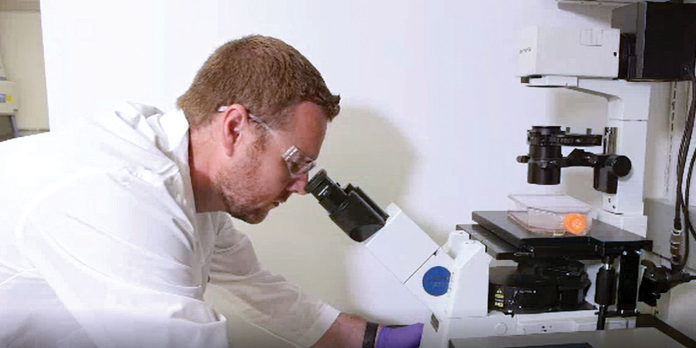
For many serious diseases, the statistics tell just half the story. Sickle-cell disease (SCD) is no exception. Yes, we can say that SCD affects approximately 100,000 people in the United States and thus qualifies as the nation’s most common inherited blood disorder.1 And we can note that around the world, about 300,000 babies are born each year with the disease.2 But even numbers as grim as these fail to convey what SCD does to people at the individual level.
To get a sense of the humanity behind the statistics, visit “Real Stories from People Living with Sickle Cell Disease,” a webpage posted by the Centers for Disease Control and Prevention.3 Read about patients with SCD who experience anemia, chronic pain, repeated infections, and other health complications. Read about families that care for loved ones struggling with SCD. Read about healthcare professionals who are devoted not only to their patients, but also to raising awareness about SCD management.

The stories are moving, but they’re frustrating, too. They remind us that no matter how familiar we are with SCD—its atypical hemoglobin molecules and distorted, sickle-shaped red blood cells—we have failed to develop adequate treatments. And they emphasize the helplessness we feel in the face of SCD’s hallmark—pain. In fact, in some languages, the names that are given to the disease refer to pain.
One of the few treatment options currently available is hematopoietic stem cell (HSC) transplantation, which is associated with 90% event-free survival when a matched donor is used. Unfortunately, suitable donors are limited, and transplantation can cause complications including infections, prolonged immunosuppression, and disease relapse. However, there may soon be better treatment options for SCD, options that address the disease at its most fundamental level, that is, the genetic level.
The potential of CRISPR genome editing
Genome editing technology, which includes CRISPR (clustered regularly interspaced short palindromic repeats) technology, is revolutionizing medical science and research by allowing the targeted editing of DNA in living cells. Diseases caused by mutations within a single gene—diseases such as SCD, Huntington’s disease, and cystic fibrosis—are all prime targets for CRISPR gene therapy to correct the disease-causing DNA mutations. In fact, it is already being evaluated in early-phase clinical trials for several disorders, including SCD.4
CRISPR technology comprises two components: a nuclease (such as Cas9), which acts like a pair of scissors and is responsible for cleavage of double-stranded DNA, and a single guide RNA (sgRNA), which forms a complex with the nuclease and guides it to the target site. However, the RNA-guided nuclease may cleave sites in the genome other than the intended one(s). This can occur since multiple sites in the genome can have the same or similar sequences to the ones being targeted. Another concern is that since no two genomes are identical, off-target effects (OTEs) may differ from one individual to the next, making them hard to accurately predict. Mostly these events occur in areas of the genome with no known function; however, there is always a risk that some OTEs might have unwanted adverse consequences.
Improved tools for genome editing
Our work at Integrated DNA Technologies (IDT) involves developing the highest quality tools to support and accelerate the research conducted by biomedical scientists and improve the outcomes of CRISPR genome editing.
Researchers typically use a combination of in silico and wet bench techniques to empirically determine the identity and location of OTEs for a given CRISPR guide RNA sequence. While the identification of OTEs is challenging enough in isolation, quantitatively and comprehensively determining editing frequencies at these sites under a variety of conditions is both cost-prohibitive and conceptually very difficult.
In 2019, in response to these concerns, IDT launched rhAmpSeq™, a targeted sequencing system that can be used in many applications, including preclinical CRISPR OTE risk assessments. This system, which incorporates proprietary RNase H2 PCR (rhAmp™ PCR) technology, enables a researcher to simultaneously characterize editing outcomes at hundreds to thousands of sites in a single reaction using next-generation sequencing.
Another improvement to CRISPR genome editing involves increasing targeting efficiency of the nuclease. While CRISPR-Cas9 genome editing offers unparalleled editing efficiency functions in various cell types and species, it still poses challenges due to low target site specificity and on-target efficiency. Many researchers have tried modifying the guide RNAs and mutant Cas9 proteins to improve target specificity, but these alterations often also reduce on-target editing performance.
Here at IDT, we have successfully engineered an improved Cas9 nuclease. We devised an unbiased bacterial screen, and we used it to isolate a high-fidelity Cas9 that exceeds the targeting specificity and matches the on-target editing efficiency of wild-type Cas9. The results of this work and examples of clinical applications were described in a Nature Medicine article.5
As the most active and specific high-fidelity Cas9 variant available when delivered as an RNP complex, it is suitable for use in clinical studies. One researcher exploring this approach is Matthew Porteus, MD, PhD, professor of pediatrics (stem cell transplantation) at Stanford Medicine.
Searching for a cure
SCD is caused by a point mutation in both alleles of the human β-globin gene (HBB). It is passed from one generation to the next through autosomal recessive inheritance in which both parents must pass on the defective form of the gene for a child to be affected.
Porteus is leading an effort to launch a Phase I SCD trial to evaluate a gene editing therapy to correct the disease-causing HBB mutation. This therapy could restore normal hemoglobin function in patients. In preclinical studies, the HiFi Cas9 enzyme has already been used to show that the sickle HBB allele could be efficiently corrected, while simultaneously reducing problematic off-target editing from ~30% to less than 1%. While this work is still in an early phase, it brings hope to sufferers of SCD and other diseases that there might one day be a cure.
The path forward
As CRISPR technology advances rapidly and generates excitement among scientists and the general public, it is paramount that we have not only the tools to edit more precisely and effectively, but also tools to check for and eventually address OTEs, particularly when considering genome editing in humans.
Like other potentially powerful technologies and scientific breakthroughs, gene editing raises legitimate questions and fears about possible risks and misuse. To alleviate fears and benefit from the opportunities afforded will require open, transparent, and continuous debate, as well as education of stakeholders including scientists, government officials, and representatives of civil society and local communities.
References
1. CDC. Data & Statistics on Sickle Cell Disease.
2. Wastnedge E, Waters D, Patel S, Morrison K, et al. The global burden of sickle cell disease in children under five years of age: a systematic review and meta-analysis. J. Glob. Health. 2018; 8(2): 021103.
3. CDC. Real Stories from People Living with Sickle Cell Disease. Accessed December 2019.
4. NIH Director’s Blog. Accessed January 2020.
5. Vakulskas CA, Dever DP, Rettig GR, Turk R, et al. A high-fidelity Cas9 mutant delivered as a ribonucleoprotein complex enables efficient gene editing in human hematopoietic stem and progenitor cells. Nat. Med. 2018; 24: 1216–1224.






